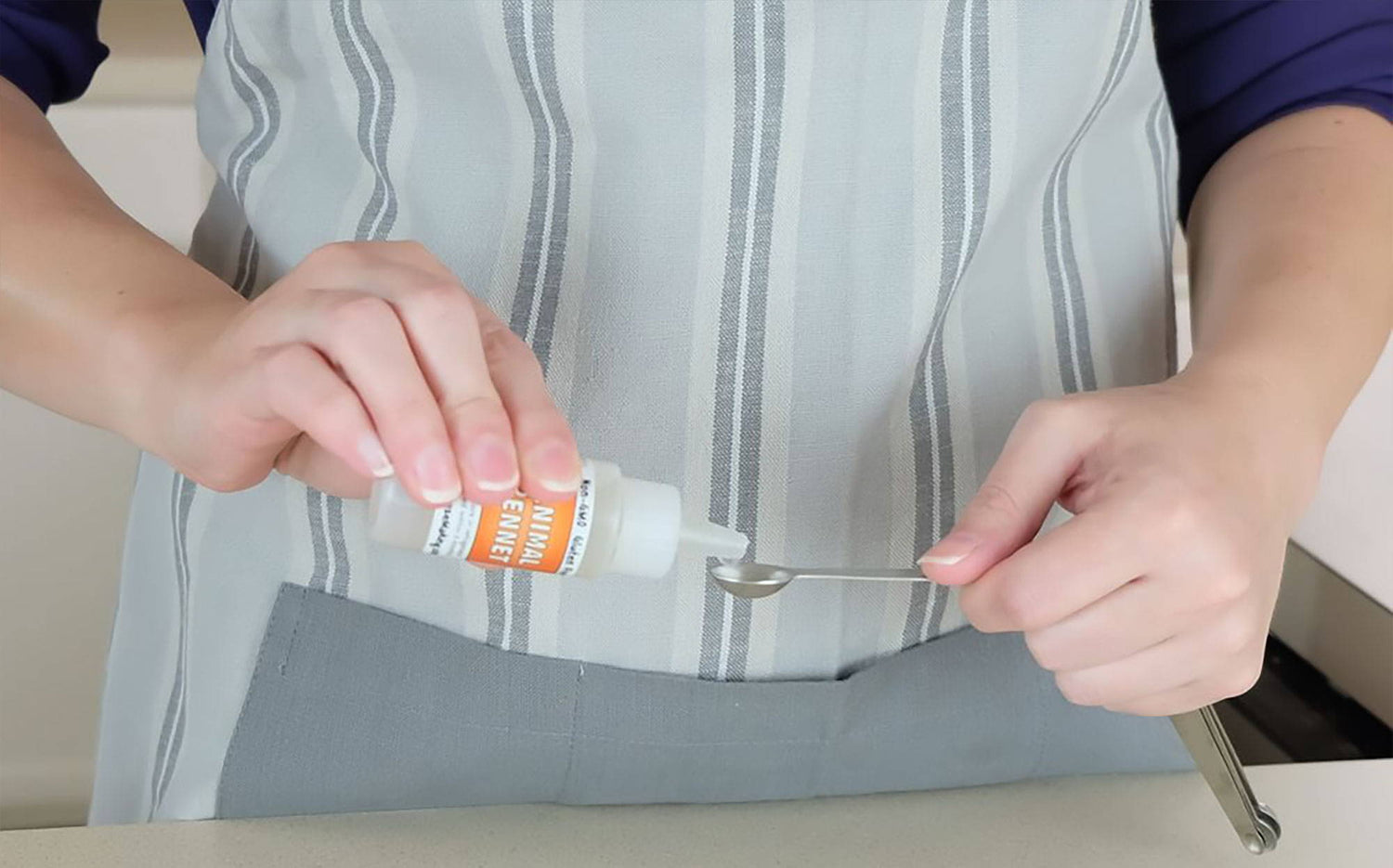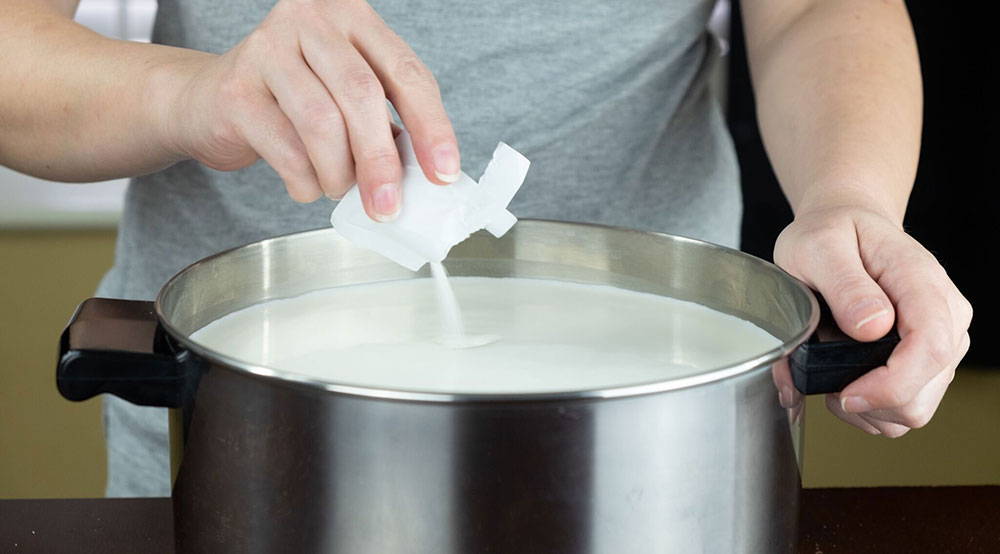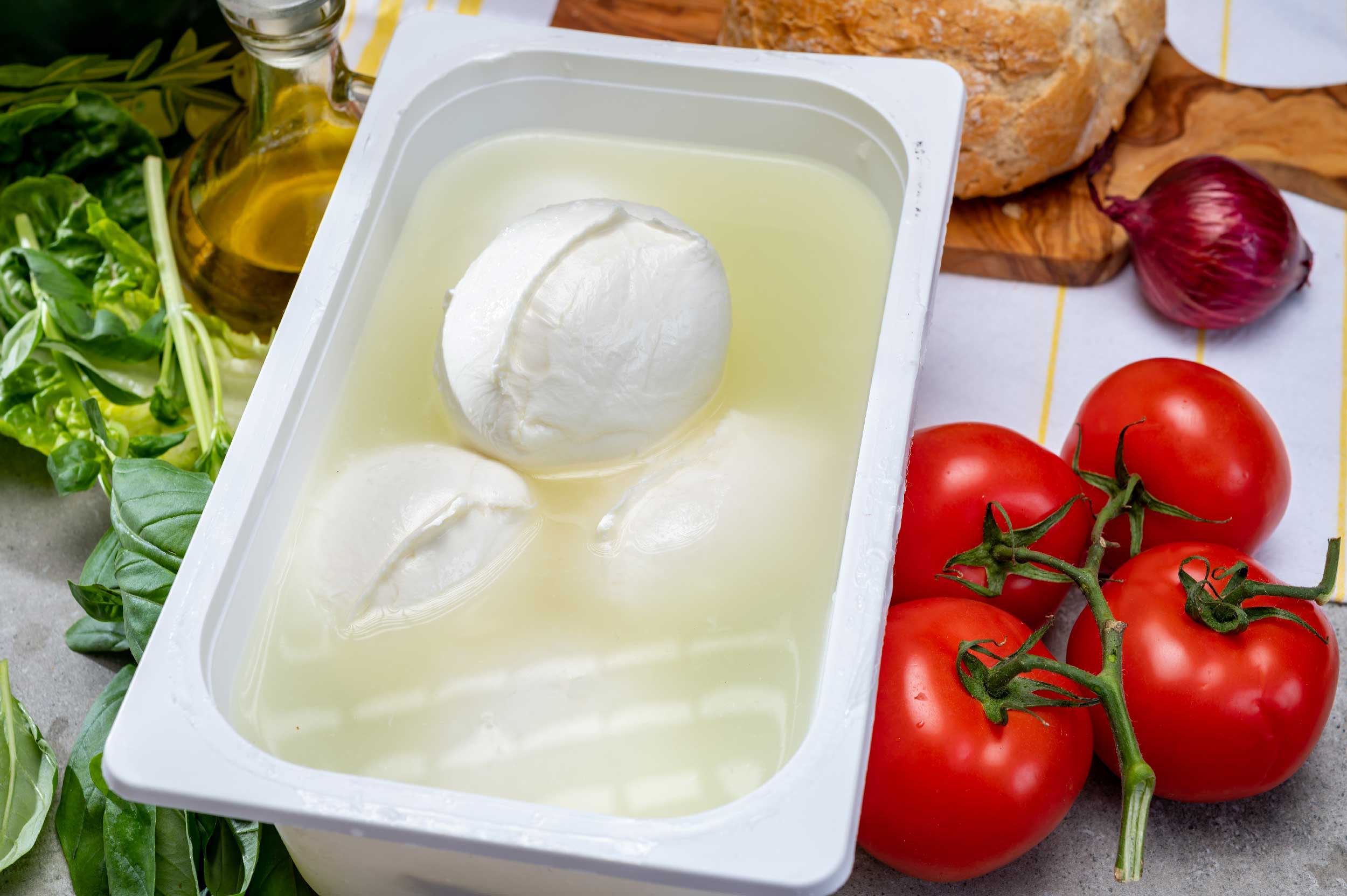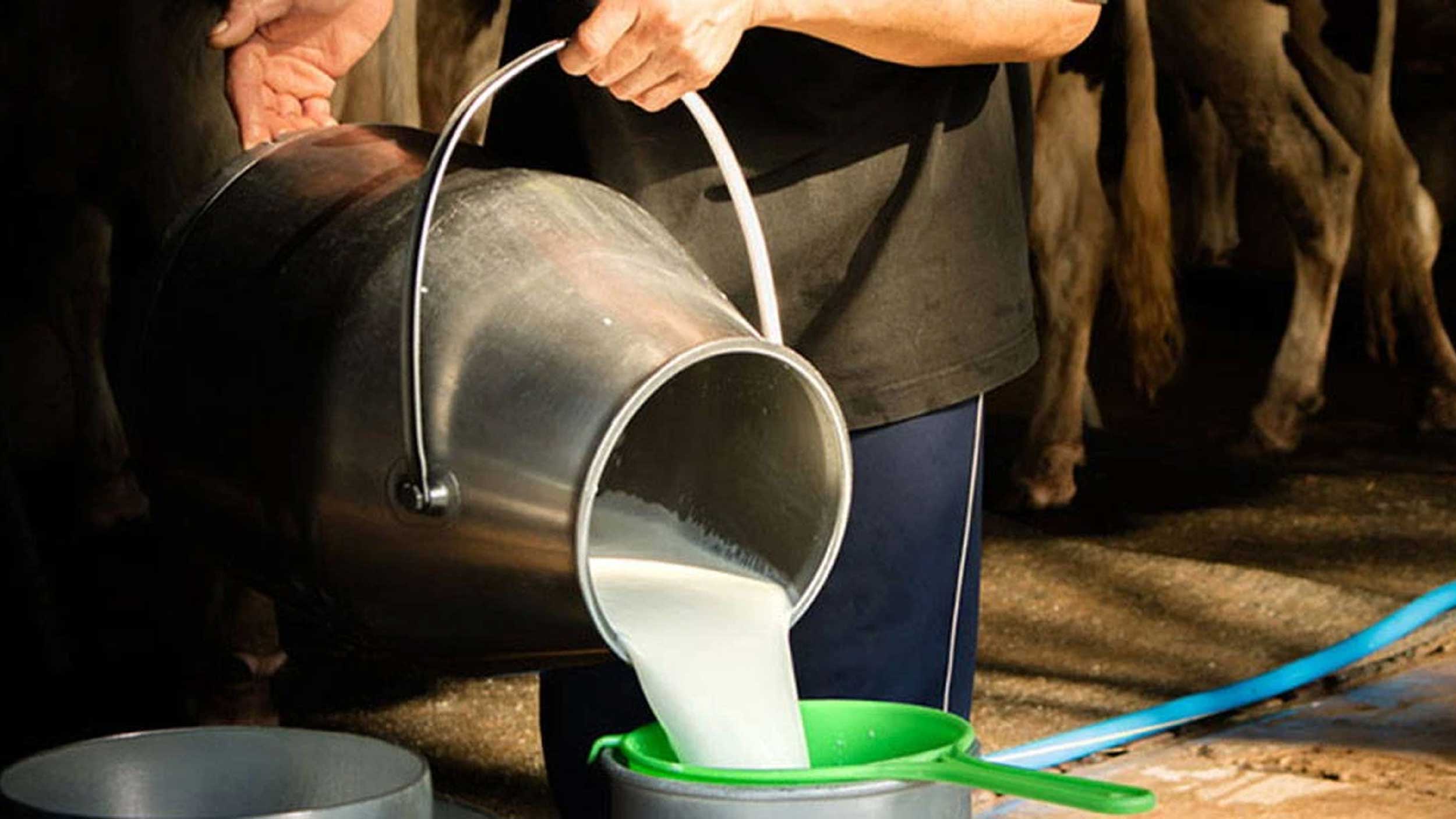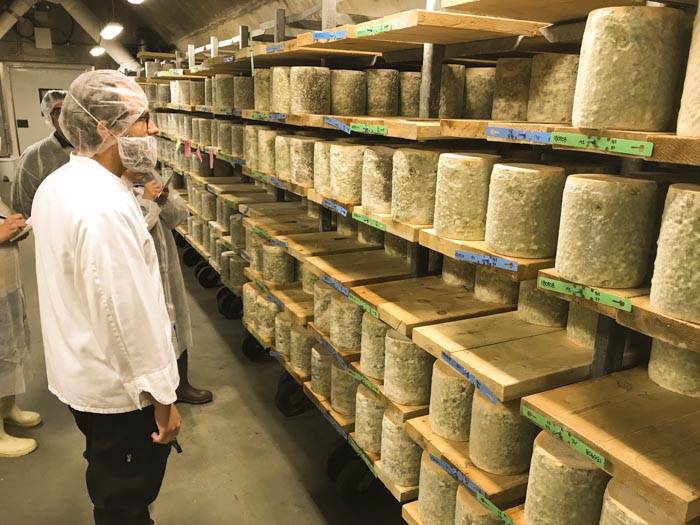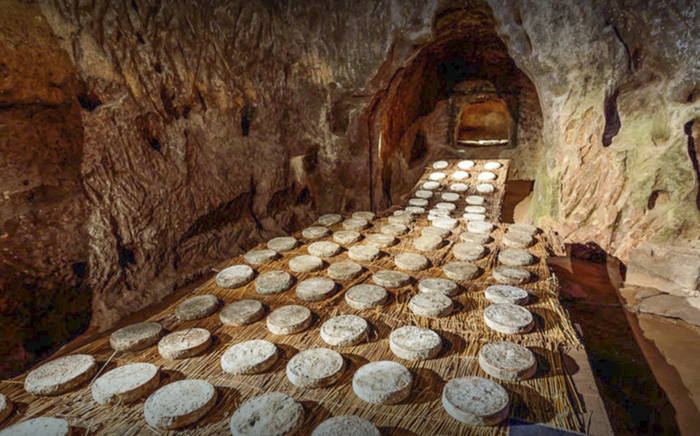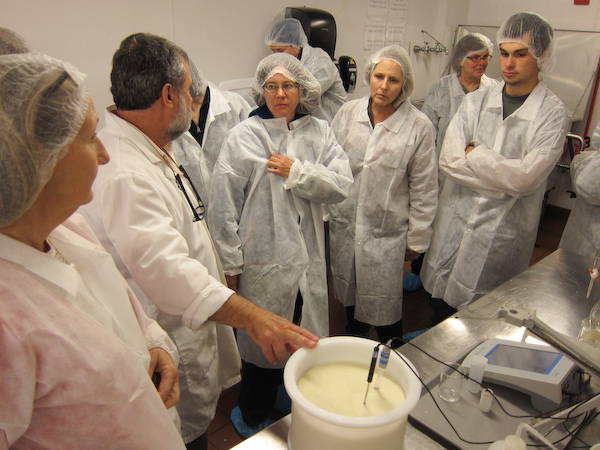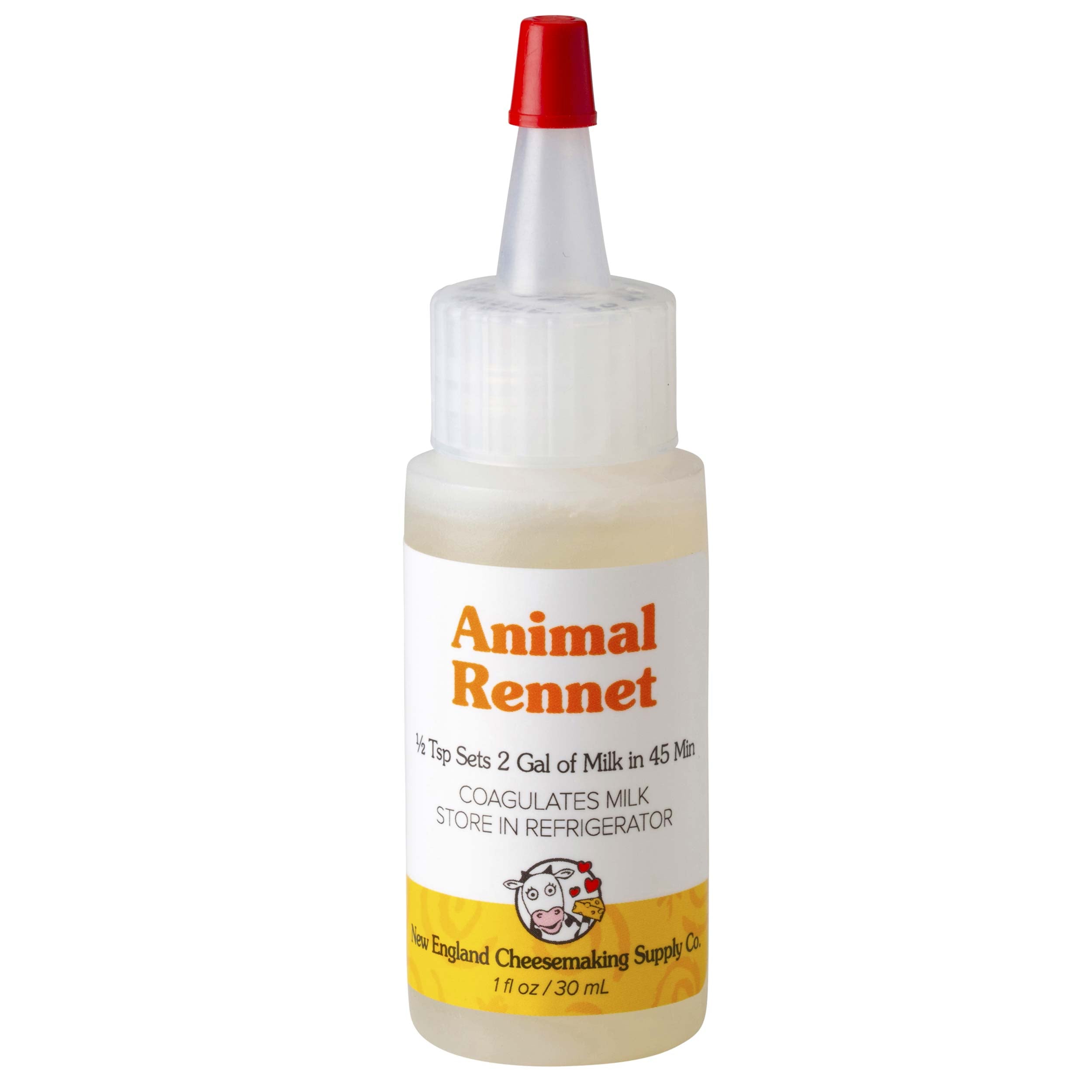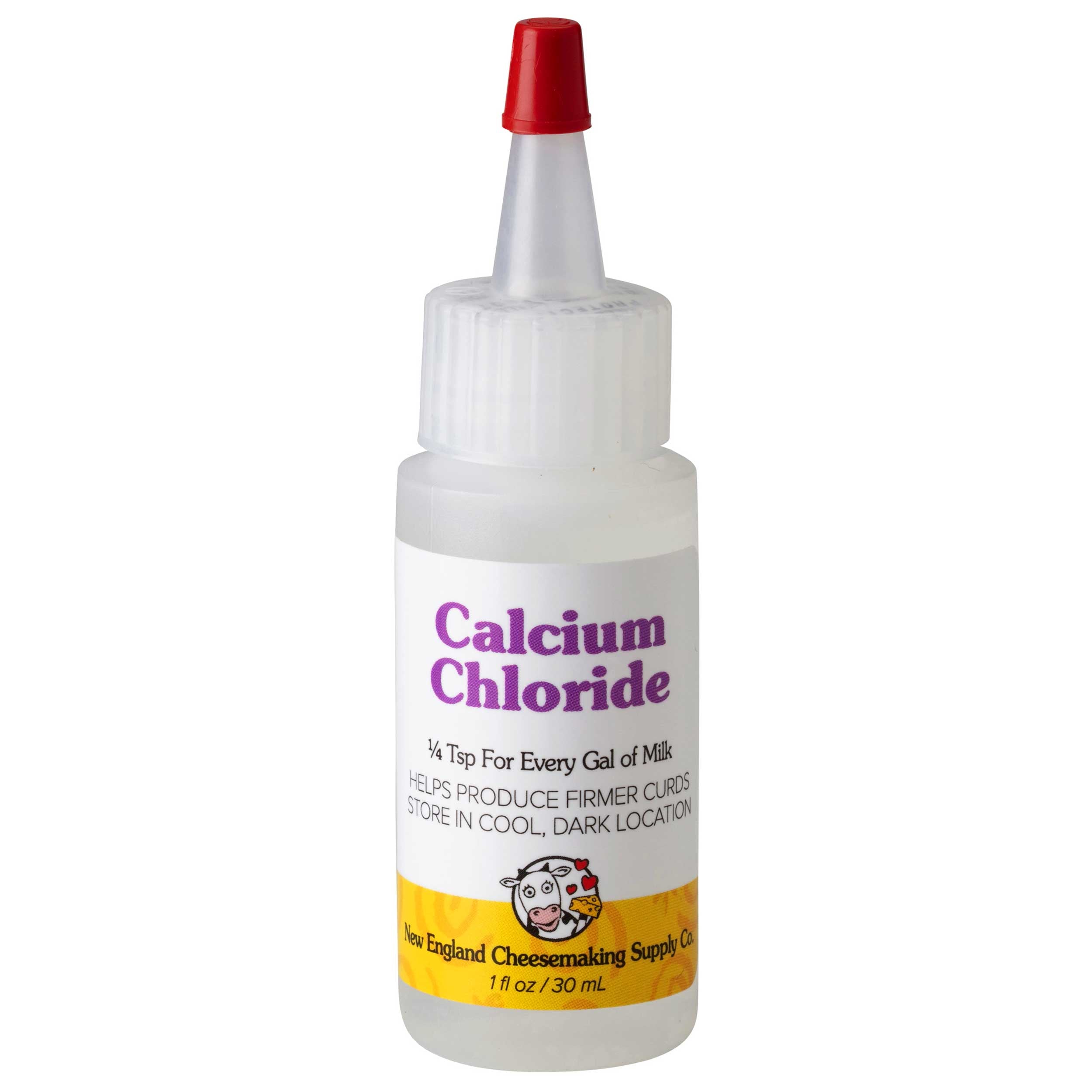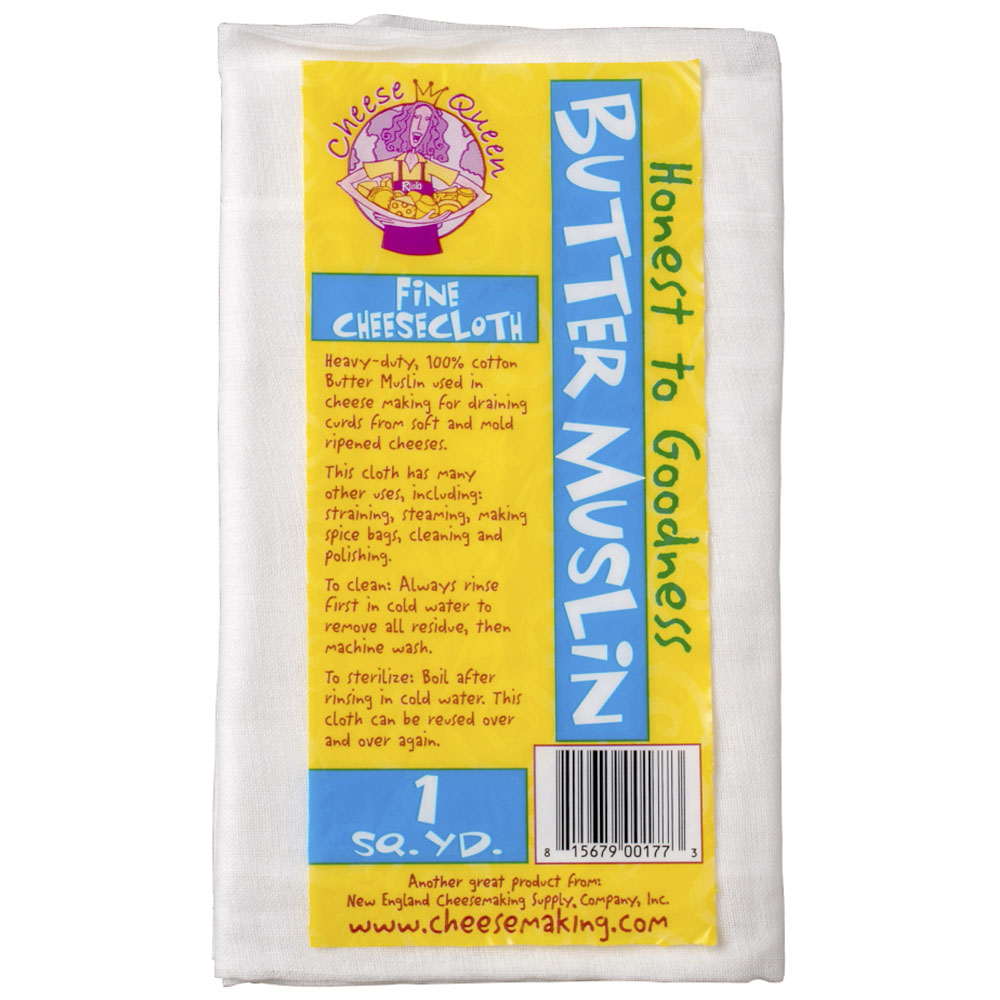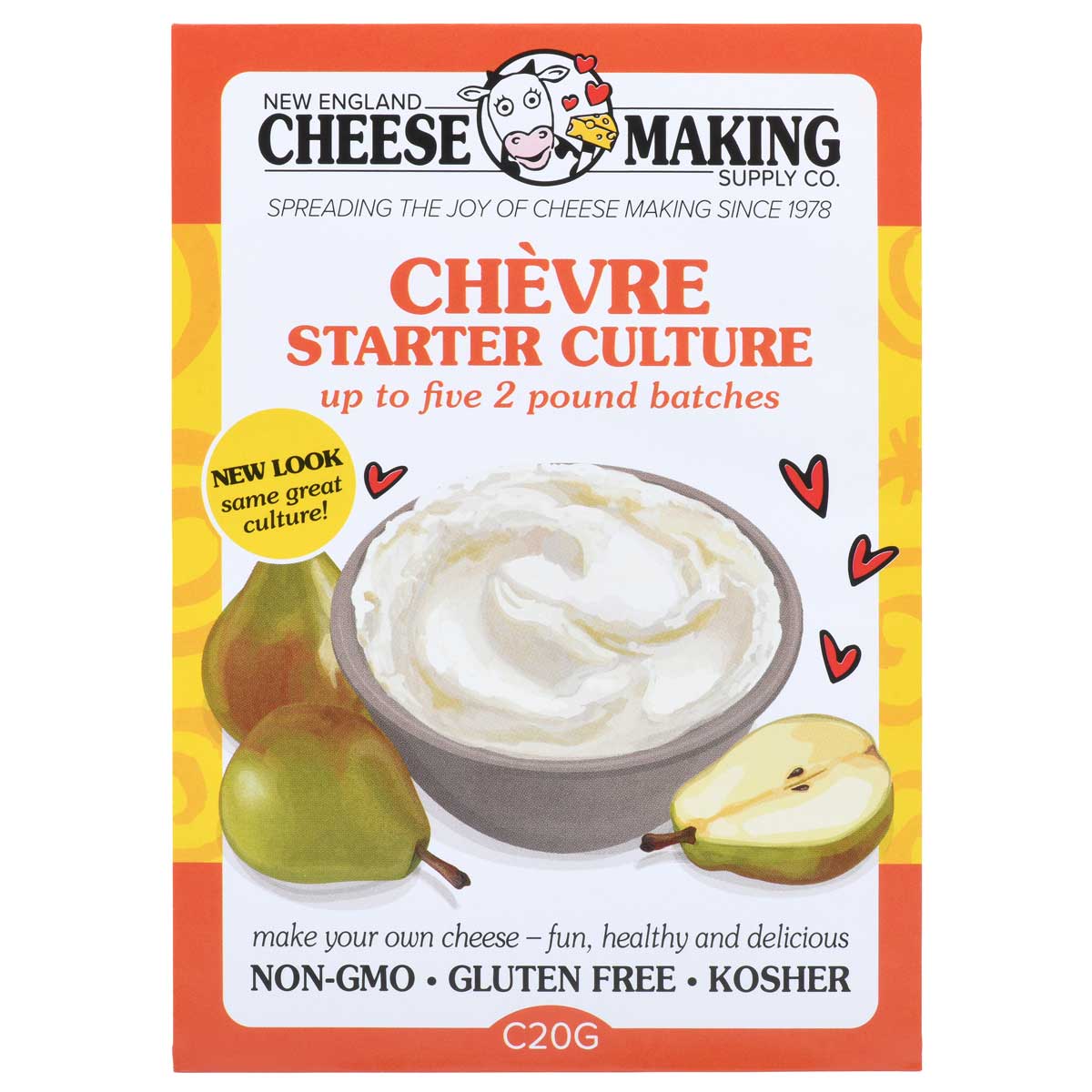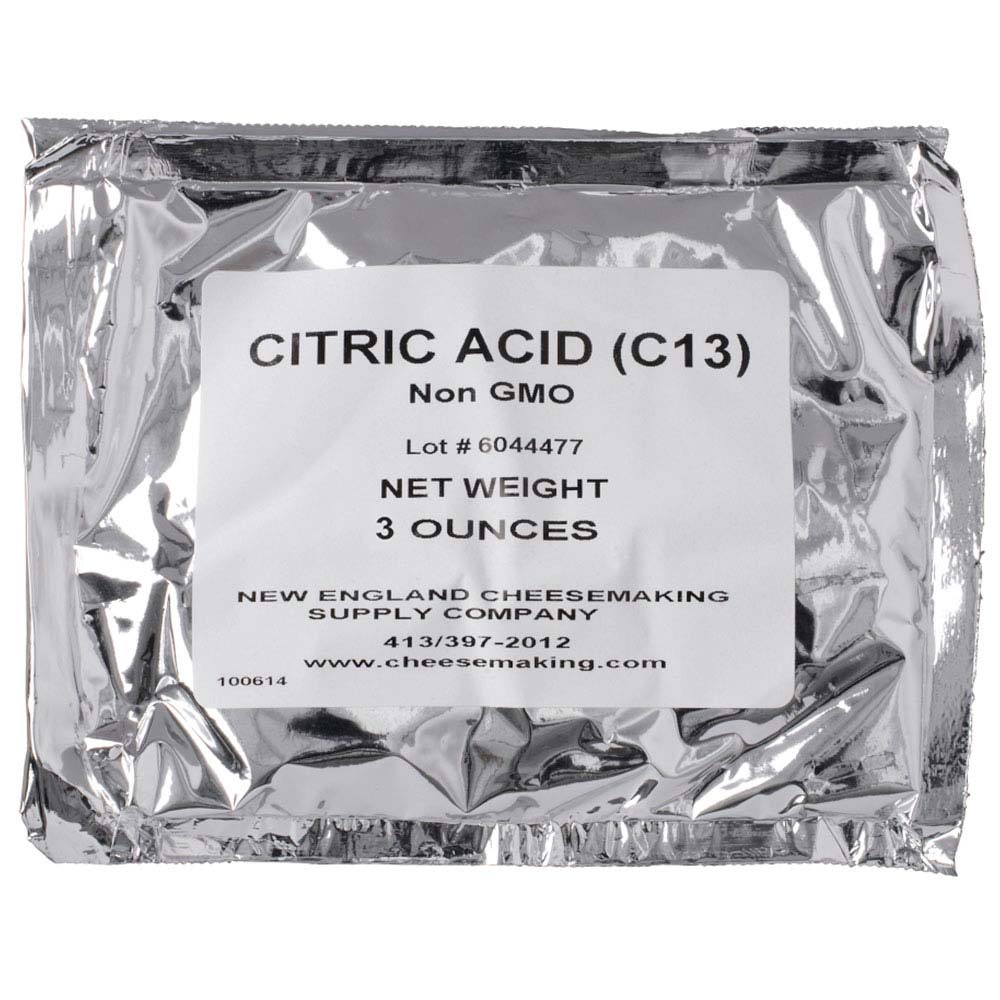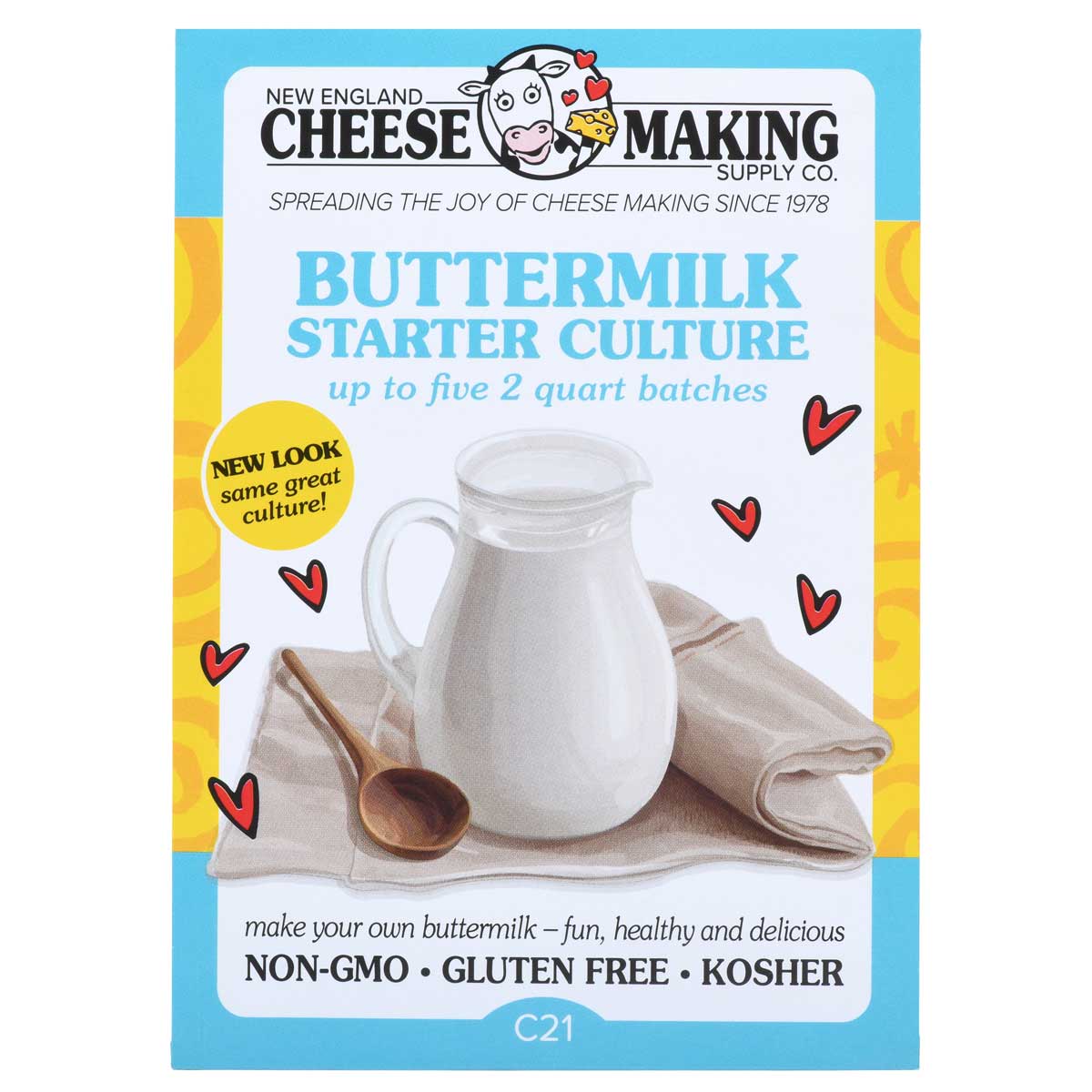This guide will help you learn about the different types of rennet, how to use them, and when to add rennet to milk when making cheese. In most cheese making recipes, milk is first ripened with cultures, then rennet is added. This makes the proteins, found in milk, to form into solid curd. The amount of rennet added will vary depending on the type of cheese being made. Some types of cheese need a firmer curd than others. Once the curd is cut, liquid whey is able to drain properly from the curd.
General Info
What is Rennet
Rennet is an enzyme used to coagulate milk, in order to form a thick curd.
Rennet begins working at temperatures between 85-105F, even at higher temperatures it will not be deactivated until it reaches 140F.
Rennet continues setting milk within the correct temperatures. So, when the recipe states, it is time to cut the curds, it is important to do so in a timely manor. Otherwise, the curd can become too firm for the cheese you are trying to make.
Different Types of Rennet
Liquid and paste rennet is the easiest to work with, because it can be measured more precisely. However, tablet and powdered rennet can be stored for longer periods of time and survive better in warmer climates.
Calf rennet is considered to be the best choice for longer aged cheese, because some of its residual components help to complete the breakdown of proteins. Some of the complex proteins in vegetable rennet can impart a slightly bitter taste after 6 months of aging.
Animal rennet is derived from the stomach of a calf, lamb or goat while their diets are still limited to milk, this is typically 90% pure chymosin.
Vegetable rennet is made from a type of mold (Mucur Miehei). However, even though it is derived from mold, there is no mold contained in the final product. It is an equivalent to chymosin and works equally, but is not animal derived.
In addition, we have recently added a thistle rennet to our shop.
Salt in Rennet
The small amount of salt found in rennet is used as a preservative. When adding rennet only 1/4 tsp is added to each gallon of milk, and much of the rennet runs off with the whey during draining. So, the amount of salt left in the cheese is virtually impossible to measure. If you are interested in making cheese with no salt, fresh cheese including Mozzarella and Ricotta are a good choice. Aged cheese requires a slight amount of salt to slow bacterial activity.
Junket Rennet
Rennet for cheese making is 80% chymosin and 20% pepsin. Junket is 80% pepsin, so it weaker than rennet used for cheese making. Even if you use more junket to compensate, the added pepsin in junket increases protein breakdown and can cause problems when aging cheese.
Junket was originally made for custards and contains many additives. In spite of this, and despite the price of junket, not inexpensive, there are many recipes online for making cheese with junket. We think this originated when cheese making supplies were hard to find for home cheese making. Cheese making supplies are now widely available, so there is less reason to use junket.
Homemade Rennet
The techniques for making calf rennet used to be handed down from generation to generation. Cheese makers knew what to expect from this process. Today, some cheese makers create their own rennet, but figuring out the specific amount to add to cheese can be difficult because the strength can vary. It can take many years to standardize the process.
Some cheese makers also make their own vegetable rennet from nettles, figs, etc. This can work for sheep milk and soft cheese, but not for aged, hard cheese.
If you make rennet, you will not be able to sell cheese in the US, because regulations stipulate the use of prepared, standardized rennet.
How to Test Rennet
When using a good quality milk, this is a way to check the performance of your rennet. If the milk has been processed above 168F, the milk will not coagulate as expected.
- Heat one cup (8 oz) of milk to 90F
- Dissolve 1/4 rennet tablet or 1/4 tsp liquid rennet in 1/2 cup cool, non-chlorinated water and stir well
- From this diluted rennet solution take 2 tablespoons and add it to the heated milk
- Stir gently from to to bottom for 30 seconds
- If rennet is working, the milk surface will begin to firm or form a slight film after two minutes. After six minutes, it will have formed a curd that will hold a knife cut
How Long Diluted Rennet Lasts
Once diluted, rennet should be used within 30 minutes for the best results.
Non-GMO Rennet
All of our rennet is Non-GMO, we have taken a strong stand against genetic modification.
Maintain Heat After Adding Rennet
Maintaining a consistent temperature, after adding rennet should not be difficult. Because, after adding rennet, the heat should be turned off. The temperature may increase slightly from residual heat on the bottom of the pot, typically a few degrees, which is not an issue.
Once curds are cut, you can begin heating while stirring very slowly. The heat will gradually transfer from the whey to the curd. If heated too rapidly, there can be a large difference between the whey and curd temperature.
We recommend stopping the heat a degree or two before reaching the final temperature.
Non-chlorinated Water
When diluting rennet, we recommend using non-chlorinated water because it can deactivate rennet. You can usually call your town water department to find out if your water is chlorinated. If you are unsure, simply use distilled water. Most filters remove 97% of the chlorine, which is fine for cheese making.
Liquid Rennet
Easy to Use
Liquid and paste rennet is the easiest to work with, because it can be measured more precisely. They do have a shorter shelf life than tablet and powdered rennet but are still the top shoice for many cheese makers.
Shelf Life
Store liquid rennet in the refrigerator, each variety of liquid rennet will have a unique best used by date.
When stored in the refrigerator, rennet will not go bad. Even past the ‘best by date’ it will simply loose potency over time. So, if your rennet is a few weeks past the ‘best by date’ add slightly more rennet than normal.
Dilute Before Using
Liquid rennet should always be diluted in cool, non-chlorinated water before it is added to milk. Because such a small amount of rennet is used to make cheese, diluting rennet will help it be dispersed more evenly.
Double Strength Vegetable Rennet
Our liquid vegetable rennet is double-strength and our organic liquid vegetable rennet is slightly more than double strength. So, use half as much as the cheese making recipe calls for.
Rennet Tablets
Long Shelf Life
Tablet rennet is the hardiest choice, with a long shelf life and little affect by warm weather. Our vegetable rennet tablets will last for one year without refrigeration. Or up to five years, when stored in the freezer.
Our cheese making kits containing rennet have vegetable rennet tablets. This provides a better shelf life and insures all kits are suitable for vegetarian cheese making.
How to Cut and Dilute
To cut the rennet tablets, you can use a pill cutter. Or, a quick rap on the back with a sharp knife placed on the score marks of the rennet tablet.
Once cut, the portion being used will need to be crushed. You can use a pill crusher, mortar and pestle or the flat side of a knife. After crushed, dilute the rennet tablet in 1/4 cup cool, non-chlorinated water. Mix well to resolve the rennet, then let sit for 10-30 minutes before adding to milk.
Conversion Tablet vs Liquid
Here is the amount of tablet rennet to use when substituting liquid rennet for cheese making.
- 1/4 teaspoon of liquid rennet equals approximately 1/4 vegetable rennet tablet
Here is a use guide for recipes calling for 1/8 tsp of liquid rennet
- Dissolve 1/4 rennet tablet in 1/2 cup cool, non-chlorinated water
- Use half of this solution if the recipe calls for 1/8 tsp liquid rennet
Powdered Rennet
Great for Hot Climates
Like rennet tablets, powdered rennet can be stored for longer periods of time than liquid rennet. It will also survive better in warmer climates. Like liquid rennet, powdered rennet is easy to measure which makes it a top choice for cheese makers in hot climates.
Dilute Before Using
Powdered rennet should always be diluted in cool, non-chlorinated water before it is added to milk. Because such a small amount of rennet is used to make cheese, diluting rennet will help it be dispersed more evenly.
How to Store Powdered Rennet
For the longest shelf life, store powdered rennet in the freezer.






























